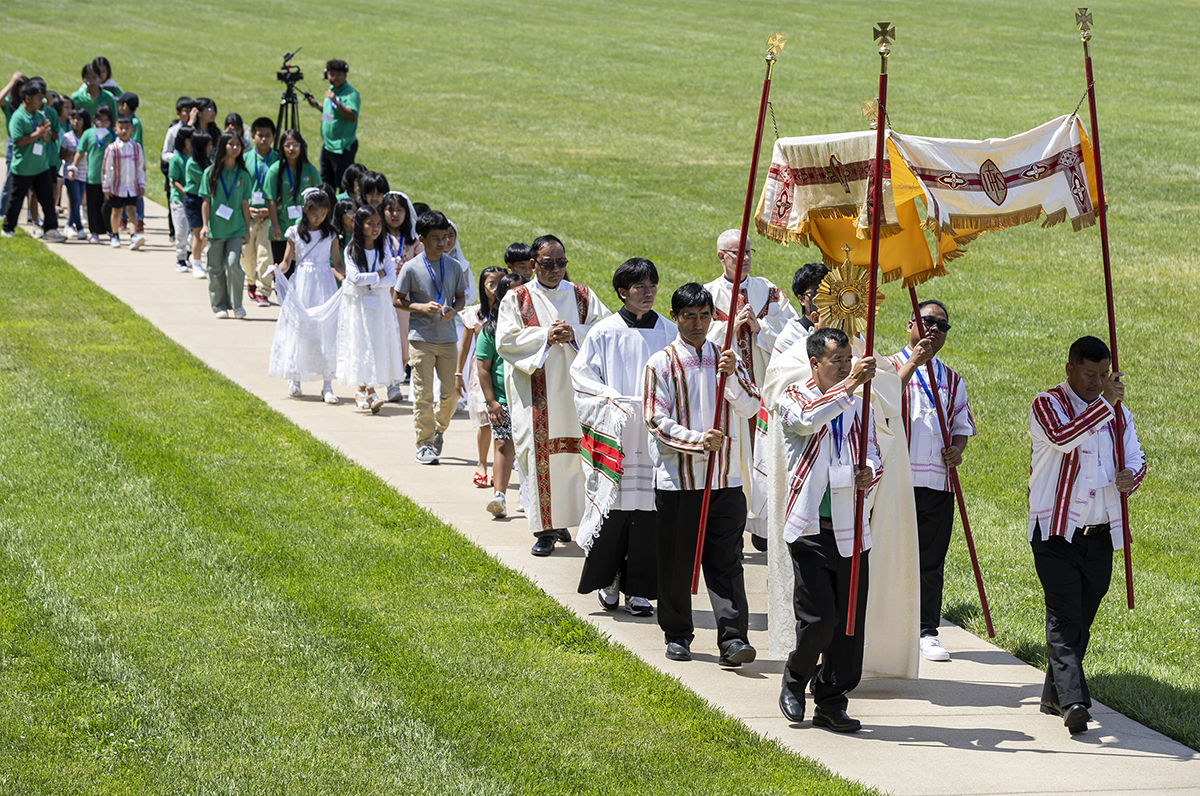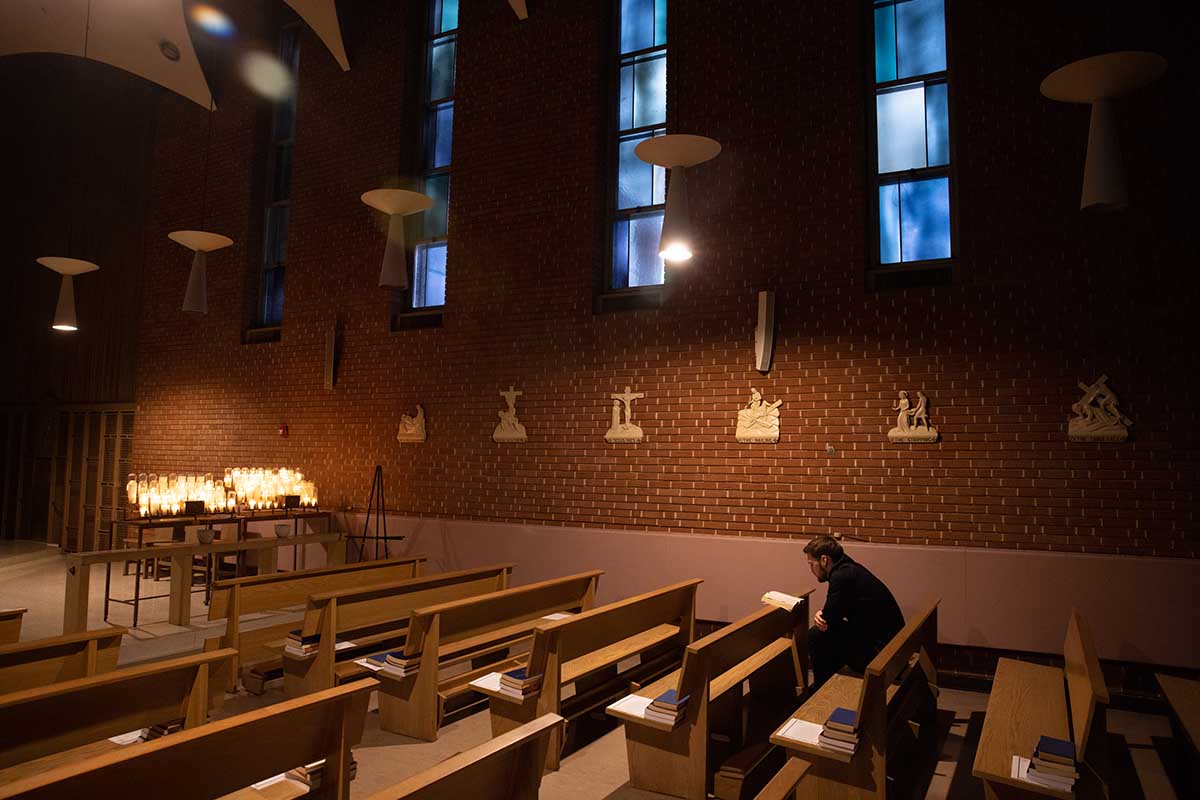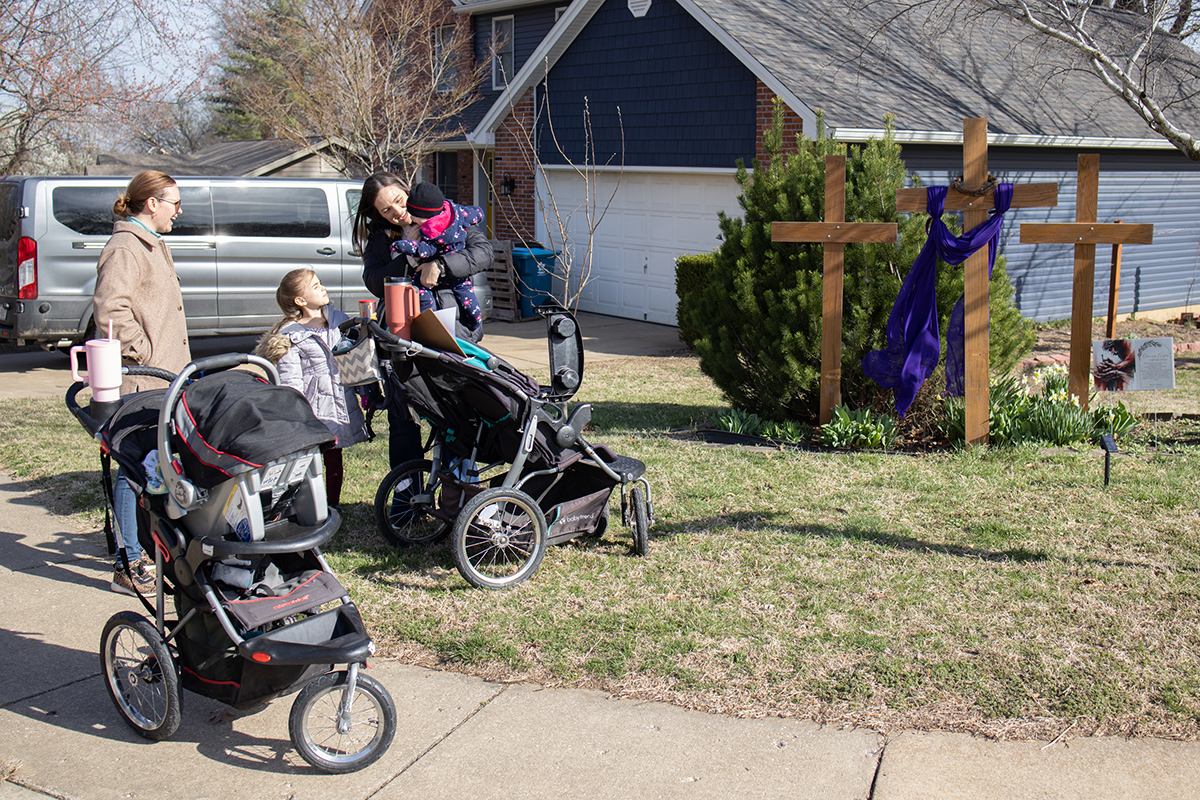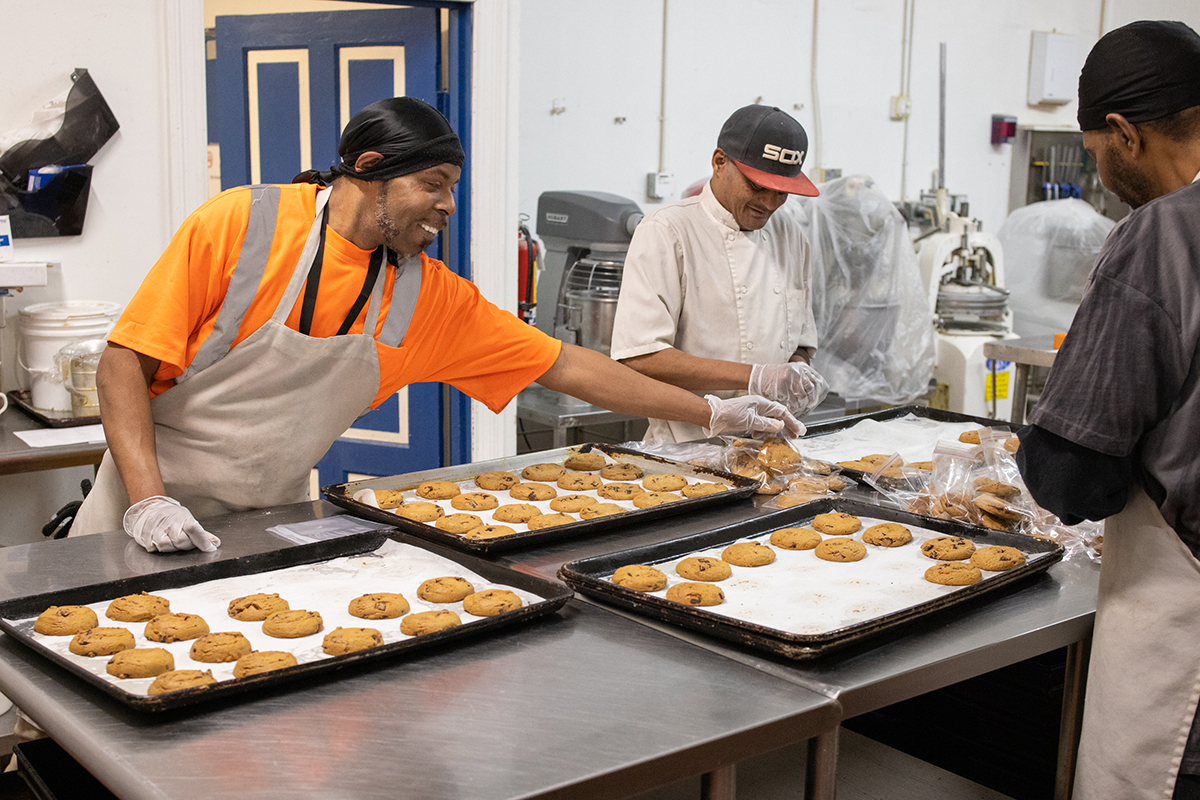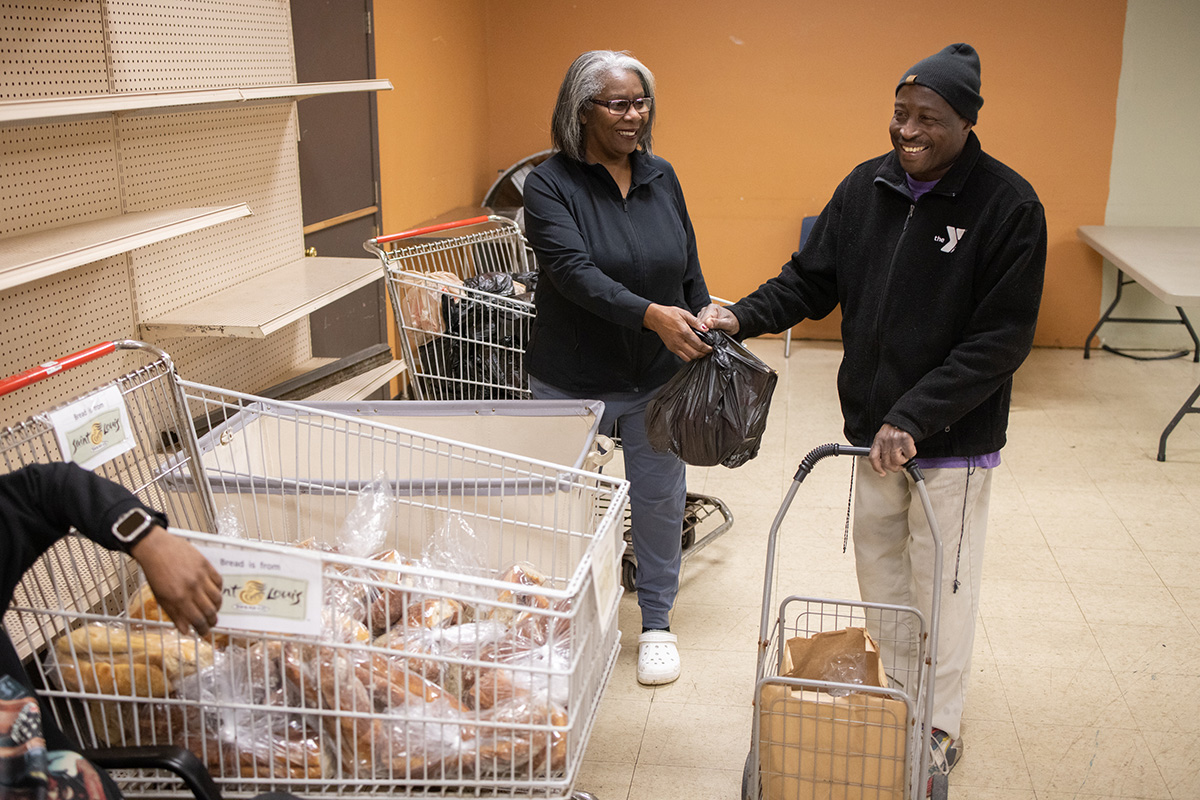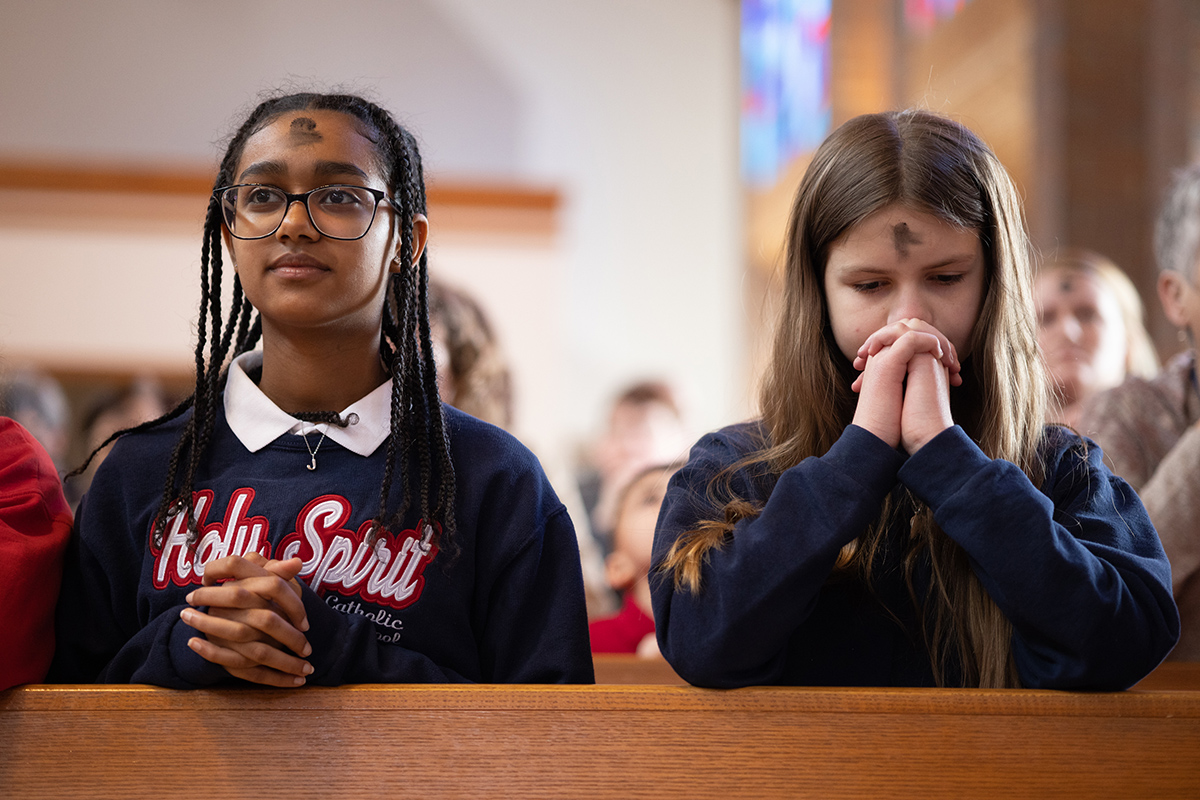Turn to the lives of saints for hope and as companions on our journey
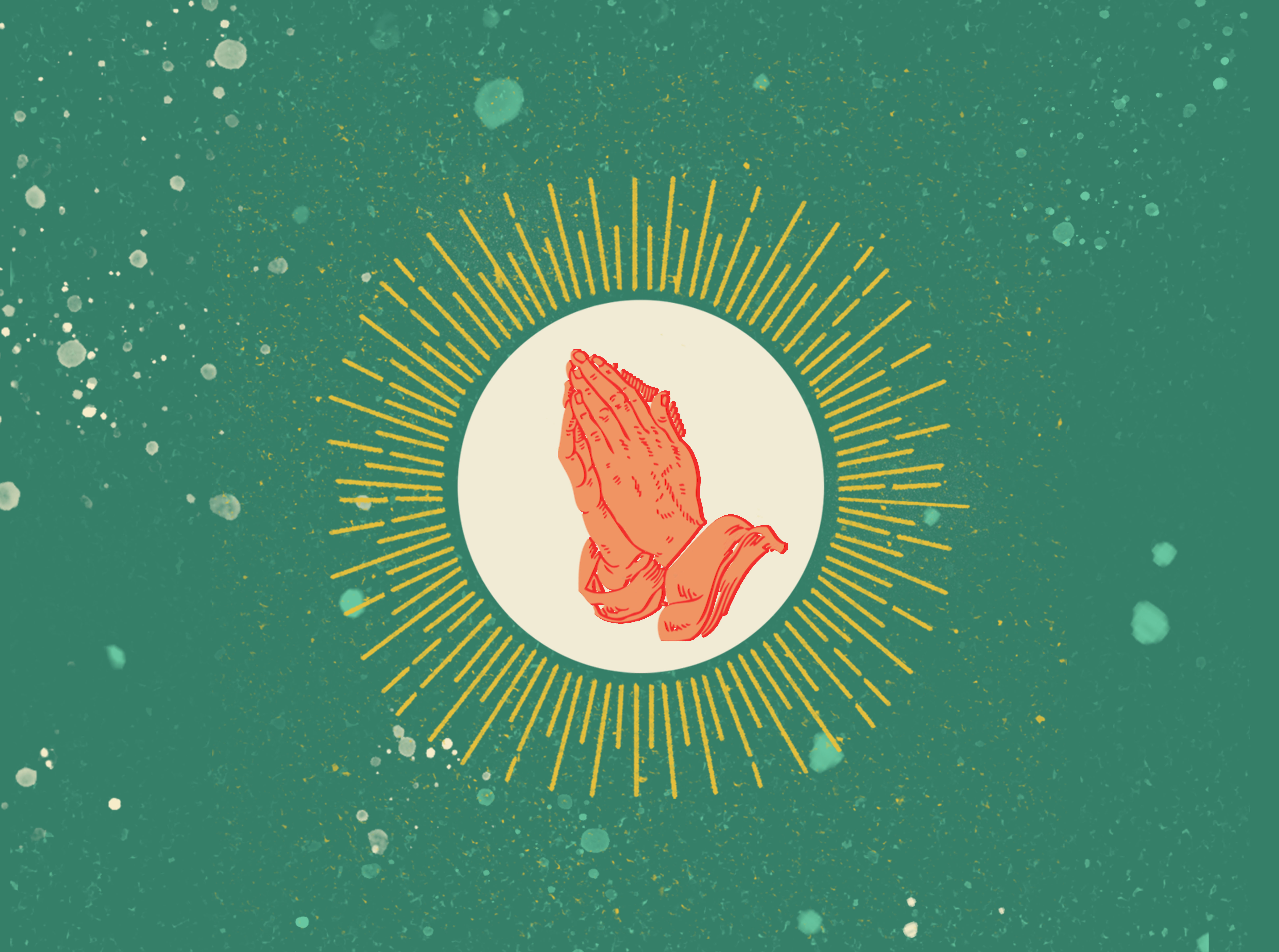
Putting the advice of saints into practice helps us move beyond spiritual poverty
Pope Francis, writing in “Gaudete et Exsultate” (“Rejoice and Be Glad”), stated that the Lord “wants us to be saints and not to settle for a bland and mediocre existence.”
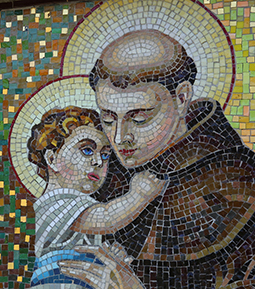
Following Christ, or the path to holiness, is a way of life. The pope cited the lives of St. Francis of Assisi, St. Vincent de Paul, St. Teresa of Calcutta and many others for whom “mental prayer, the love of God and the reading of the Gospel in no way detracted from their passionate and effective commitment to their neighbors.”
We can draw inspiration from the saints in many ways.
“Actions speak louder than words; let your words teach and your actions speak.”
The Catechism of the Catholic Church refers to them as “witnesses who have preceded us into the kingdom,” who share the living tradition of prayer by the example of their lives, their writing and their prayer today.
Human inspiration
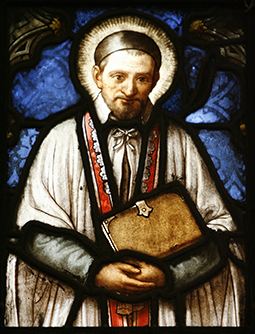
Madeline Pecora Nugent is a prolific writer on patron saints, calling them fascinating and inspiring models who “give us hope that we too may someday enter Paradise.” Nugent said that some folks have the idea that saints are paper-cutout figures who never dealt with fear, temptation or pride and who never made mistakes.
The thought that saints were popular at all times and had “some sort of aura” is far from the truth, Nugent wrote in an item promoting her work. She cited a bishop who was reprimanded by the pope for errors of judgment (St. Hilary of Arles), a former satanic priest (St. Giles of Portugal), a vain, worldly teenager (St. Teresa of Avila) and a man with a grating personality (St. Jerome).
“The saints were and are genuine human beings who are subject to the human range of emotions, rejection and error,” Nugent wrote. “Their single distinguishing quality was that, following their conversion to Christ, they all, sometimes with great difficulty, oriented every facet of their lives toward their Savior.”
Companions on the journey
Sister Laura Brown of the Daughters of St. Paul in St. Louis, who operate Pauline Books and Media, said saints are “great companions on our journey that help us in our following of Jesus and of being faith-filled disciples.”
There’s a wide range of saints, Sister Laura said, including laypeople and young people such as Blessed Pier Giorgio Frassati, a young mechanical engineer who acted on his concern for people who are poor, and St. Therese of Lisieux, who revealed her “little way” of holiness.
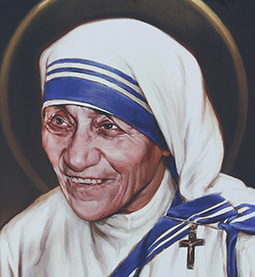
Saints are “great witnesses” who’ve run the race, fought the fight, and now they’re enjoying the presence of God forever,” she said. “They understand the struggles in our life, they’ve been here and done that, and they want to help us, cheer us on, but we have to ask.”
The Catechism of the Catholic Church explains that saints contemplate God, praise Him and constantly care for those whom they have left on earth. “Their intercession is their most exalted service to God’s plan. We can and should ask them to intercede for us and for the whole world” (CCC, 2683).
Msgr. Michael Witt, professor of Church history at Kenrick-Glennon Seminary, teaches a course premised on “moments of crisis that come along” at crossroads in Church history. “That’s the moment the Holy Spirit sends a charism to an individual — that’s a saint — who addresses that particular crisis and the Church survives through it.”
It’s a follow-up on a book by Archbishop Alfred Hughes, “Spiritual Masters.”
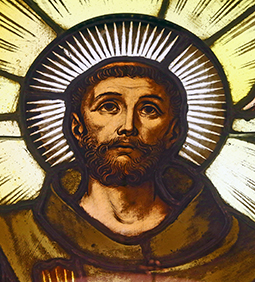
Examples include St. Francis of Assisi, who addressed the issue of wealth. Also, St. Teresa Benedicta of the Cross, St. Maximillian Kolbe and Blessed Bernhard Lichtenberg who confronted the treatment of Jews and tyranny in Nazi Germany.
The seminarians choose a person to research and give a presentation, which “is a rich experience,” Msgr. Witt said.
Listening to God’s plan
Father Philip Sosa, provincial superior of the Missionaries of the Holy Family, recognizes the struggles of families, noting that the Holy Family of Jesus, Mary and Joseph is an example of keeping a close relationship with God by praying daily and by loving and serving one another. St. Joseph gives us an example of a humble servant, he added, someone with great trust in the Lord. Likewise, the Blessed Mother accepted being part of God’s plan.
“God has a plan for each and every one of us,” Father Sosa said, and people have to listen to figure it out. He cited St. Monica, who prayed for years for her son, St. Augustine, who led a wild life and eventually turned his life around. “We have to be open to making change in our lives for the better,” Father Sosa said.
In “Martyr for Justice and the Poor,” an article in the St. Louis-based Missionaries of the Holy Family publication The Messenger, Father F.A. Eka Yuantoro, MSF, writes about his
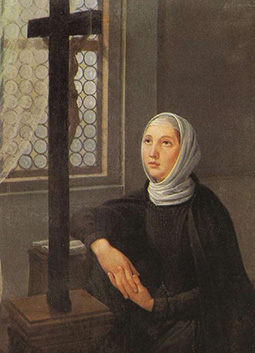
admiration for St. Oscar Romero, the martyred archbishop of San Salvador who was a defender of the poor and oppressed. Father Yuantoro, using the example of the saint, said that “if we are messengers of justice, peace and mercy, Jesus Christ will be visible in His Church and in the world, faithfully defend those hungry for truth and love.”
“The last word that I address to you and one I urge upon you with all the ardor of my soul, is that you live in harmony, united together in one heart and one will. Be bound to one another by the bonds of charity, treating each other with respect, helping one another, bearing with each other in Christ Jesus: if you really try to live like this, there is no doubt that the Lord, our God, will be in your midst.”
In “Gaudete et Exsultate” (“Rejoice and Be Glad”), Pope Francis states that a Christian’s mission on earth is a path of holiness. He mentions three saints — St. Francis of Assisi, St. Vincent de Paul, St. Teresa of Calcutta — devoted to mental prayer, the love of God, the reading of the Gospel and a passionate and effective commitment to their neighbors.
St. Francis of Assisi — He was born in 1182 the son of a rich fabric merchant and a noblewoman, and grew up occupied with family duties and worldly affairs. When he returned from his war experience, his life took on a new direction, guided by his constant wish to know that to which God was calling him. Prayer and silent contemplation led him to embrace lepers and outcasts as brothers and sisters, those in the past he had always found disgusting and repulsive. In observance of the Gospel, he decided to give away all he had to the poor. In Spoleto he heard again this voice break the silence of his prayer before a Byzantine crucifix in the small abandoned church of San Damiano. The voice said: “Francis, go repair my church, which as you can see is in ruin.” Francis first interpreted that call as an invitation to reconstruct the ruins of the small chapel, but in later years he came to understand He was called to “great things, to renew,” with a spirit of obedience, the Church, which at that time was dealing with divisions and heresies. The spirit of Francis continues to inspire so many in following Christ, in building dialogue among all in truth and charity, and in safeguarding creation.
St. Vincent de Paul — Burning with the desire to make Jesus known to the poor, Vincent devoted himself passionately to preaching, especially through popular missions and by careful attention to the training of priests. The Spirit used him as the means for a great outpouring of generosity in the Church. Inspired by the early Christians, Vincent founded the Confraternities of Charity, who cared for those in greatest need by living in communion and joyfully sharing their possessions, in the conviction that Jesus and the poor are the treasure of great price. As he loved to repeat, “When you visit the poor, you encounter Jesus.” The “mustard seed” sown in 1617 grew into the Congregation of the Mission and the Company of the Daughters of Charity, then branched out into other institutes and associations and became a great tree which is the Vincentian Family.
St. Teresa of Calcutta — Small of stature, rock-like in faith, Mother Teresa of Calcutta was entrusted with the mission of proclaiming God’s thirsting love for humanity, especially for the poorest of the poor. Born in 1910 in Albania, she was a soul filled with the light of Christ, on fire with love for Him and burning with one desire: “to quench His thirst for love and for souls.” She founded the new congregation of the Missionaries of Charity in Calcutta to respond better to the physical and spiritual needs of the poor.
Vatican News
Books
List compiled by Sister Laura Brown, FSP
Books on Saints for Children:
• “Encounter the Saints” Series of 37 different chapter books on the saints; reading level: 4th grade … Exciting and fast-paced. Kids and adults love them.
• In our “image based” culture, graphic novels are a great way to present the saints to kids in a way that they will actually read. These are popular options:
“Saint Teresa of Avila: God’s Troublemaker,” “Philip Neri: Laughing Saint,” “Saint Clare of Assisi: Runaway Rich Girl,” Saint Christopher, and our new release: “St. John the Baptist; A Voice Crying in the Desert” by first-time author Ezekiel Saucedo, a Washington University graduate
“57 Saints for Children,” by Anne Eileen Hefffernan, FSP
“My First Book of Saints”, Susan Helen Wallace, FSP
Coloring books:
“Fun with the Saints”
Saints of the Americas
Adult books
“Saint Monica: Power of a Mother’s Love” by Giovanni Falbo
“Padre Pio: Glimpses into the Miraculous” by Pascal Cataneo
“My Vocation is Love” (St. Therese) by Jean LaFrance
“St. Joseph: Help for Life’s Emergencies” by Kathryn hermes, FSP
“Saints Alive! The Faith Proclaimed” (30 Stories of Dramatic Moments of Grace” (This is one of my favorites!)
Soon to be beatified Fulton Sheen: “Fulton Sheen” by Alexis Walkerstein
Adult Coloring Book
“Inspiration from the Saints” Cindi Duft
All of these can be found on www.pauline.org or at Pauline Books and Media, 9804 Watson Road in Crestwood.
What saints mean to people:
The St. Louis Review sought input from Catholics via social media on what qualities of saints in general or in particular they find inspiring and helpful to you in their lives.
Here are some of their responses:
What heavenly friends we have. I love to call upon St. Pio as he said here on earth that he will be available to help us when he is in heaven. I take him up on that and am so happy I can be his spiritual child.
— Vicki Keller
St. Anthony never fails me, any requests of any size. St. Rita is the patron saint of baseball players. I’m a CPA, so I look to St. Matthew. I have a statue of St. Peregrine in honor of cancer patients, my late wife Kate being one.
— Joe Huss
I was always taken by Maria Goretti. She symbolizes strength at such a young age. And yet so many young girls are still experiencing the same horrors.
— Rose Lauman
St. Joseph the patron saint of carpenters. Most mornings before I stepped on a construction (site), I would ask St. Joseph to help me be the best carpenter I could be and to keep all of the construction workers safe.
— Tony Caputa
My Mom and Dad named me after my Dad, Bob, but my middle name is Michael, for St. Michael the Archangel. Mom had a stillborn boy between my older sister, Pat and myself. Mom was always religious, second-generation American from German parents). I think a lot of prayers were said for me to be born. I’m pretty sure I have been watched over my whole life for all the times I have been in and put myself in situations that may have ended not so well. I do feel very much St. Michael the Archangel.
— Bob Ewing
St. Michael the Archangel. Not only was I born on his feast day (Sept 29), I grew up in St. Michael the Archangel Parish (it was kind of nice being off school on my birthday every year). He represents so much for me. The saint I pray to the most, though, is the Virgin Mary. My Mom had a deep love and devotion to Mary, and I truly believe she has helped me so much throughout my life.
— Nancy Tayloe Poole
Nine months after I was born, I contracted mumps and measles at the same time. I went from 30 lbs. to 9 lbs. The doctors had told my mother that they didn’t think I would survive the night. My mom was devastated. A nun had given my mother a relic of Martin De Porres to put on me. A Catholic nurse had agreed to place the relic on me. My family had prayed, and the next morning they found me on all fours alert.
— Martin Hanak
The martyrs are a huge inspiration. I wrote a song about it that I think spells it out well … (“Martyrs’ Anthem”)
— Phill Kosta
My father became Catholic as an adult, and chose (St.) Florian as his confirmation name (patron saint of firefighters). Each of my boys were given St. Christopher medals when they began driving. I have given so many saint medals as gifts, relating to professions/special needs. I have an intimate relationship with St. Anthony, as I tend to talk to him at least on a monthly basis! And finally, I lean on The Blessed Virgin Mary on a regular basis.
— Terri Young
So many … St Anthony when things can’t be found. St Jude, St. Joseph but I mostly run straight to The Holy Mother Mary. When I am for loss of words or need to have a talk with someone, I pray to the Holy Spirit.
— Mary Schwan Wedemeier
I connected with St. Therese the Little Flower. I would attend adoration at St. George Parish and while there I read her autobiography. At times I found myself doubting the existence of God and was shocked to read that those thoughts had crept into her head as well. She explained them simply as the temptation of the devil and to push them aside. Very simple yet very helpful to me.
— Marie Schuler
St Gerard, patron saint of mothers. I had high-risk pregnancy 15 yrs ago, (and she) gave me such comfort each evening going to bed, praying to St Gerard to give me strength and to protect my baby.
My son is now 15, and 6 ft tall!
— Julie Henson
I highly admire the saints who acknowledged their sins, faced their temptations and battled their dark nights of their souls. It shows us that binding to God’s love and that His only son our Lord, is there with us, helping us to cling to that love and the narrow road to heaven is possible, when we face our sins and temptations and work each minute to overcome them. Those saints show us it can be done and that gives me hope. I also love those saints who came to love Jesus even more during their sufferings. Many think of suffering as bad, but many saints used that time to show us how to become even more holy.
— Joseph Miller
Saints show us that for the most part their lives began as “normal.” The strength of their faith to follow the path God made for them led them to sainthood. We also are called to follow God’s plan. They are examples of how to live the life we are called to live not the one we choose to live.
— Tracy Weber Bowler
Pope Francis, writing in “Gaudete et Exsultate” (“Rejoice and Be Glad”), stated that the Lord “wants us to be saints and not to settle for a bland and mediocre existence.” … Turn to the lives of saints for hope and as companions on our journey
Subscribe to Read All St. Louis Review Stories
All readers receive 5 stories to read free per month. After that, readers will need to be logged in.
If you are currently receive the St. Louis Review at your home or office, please send your name and address (and subscriber id if you know it) to subscriptions@stlouisreview.com to get your login information.
If you are not currently a subscriber to the St. Louis Review, please contact subscriptions@stlouisreview.com for information on how to subscribe.

